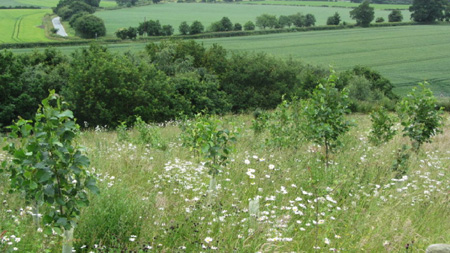The Greening of a Landfill Site
25 July 2013 by Daryl Tunningley

With its banks of wild flowers, green hedges and young trees you could be forgiven for thinking this is a typical Summer scene in the beautiful English countryside.
In fact you’re looking at part of a former 10-acre landfill site at Wyrley Grove, Pelsall in Staffordshire which was operated by Cleansing Service Group until it was declared full in 2008 and closed.
The site once formed part of the Wyrley Grove Colliery, which opened in 1857 and closed in 1952. The land used for waste disposal was the colliery’s washing pit and was surrounded by colliery spoil bunds which formed a large void into which the waste was tipped.
Before beginning landfill operations there, CSG progressively covered the entire site base with a plastic liner to prevent the escape of contaminants to land and groundwater. This is common practice now, but at the time it was the first UK landfill site to be lined in this way.
Industrial and commercial waste was landfilled here for 13 years, but a year after the site closed CSG began a £1.5million restoration scheme to ‘green’ the site – which lies alongside the SSSI-designated Cannock Extension Canal – and return it back to nature.
CSG called in award-winning environmental consultants White Young Green Environmental Ltd. to devise a land restoration scheme in consultation and co-operation with Staffordshire County Council and the Environment Agency.
First stage was to cap the site with plastic sheets which were welded to the original bottom liner to enclose the waste in a leakproof plastic ‘envelope’. The whole site was then covered with 200,000 tonnes of sub and topsoil coating the landfill to a depth of one metre.
Thousands of woodland trees were planted across the site, including oak, rowan, birch and willow, while other areas were seeded for grassland or with a huge variety of Britain’s traditional wildflowers.
New native hedgerows have been planted, while a large, newly created pond has been fringed with acquatic plants chosen to encourage wildlife to Wyrley Grove.
The scheme also includes a marshy area which has been planted to encourage biodiversity, and a wildlife corridor to help species migrate across the site.
Now, just a few years on from its closure, the area – a brownfield site since the 1850s – is alive with wildflowers, is already home to many species and is grazed by deer.
